1915 Sizaire-Berwick "Wind Wagon"
The "Wind Wagon" was a 1915 Admiralty experiment. R.N.A.S. squadrons were being withdrawn from the Western Front and sent to Africa and the Near East, where the terrain wasn't suited to conventional cars. Only one was made,  and it was only tested in England.
and it was only tested in England.
Armored Quadricycle
Armed with Maxim Machine Gun and powered by a small motor. The vehicle is demonstrated here in June 1899 by a Mr. F.R.Simms
Bison 1, Bison 2
The Bison's armor was interesting, a mix of steel reinforced concrete forming a type of mobile pillbox. Bison 2's chassis is unknown, but it is also of steel reinforced concrete. These vehicles were most likely constructed at Concrete Limited's Stourton works in Staffordshire.
NSU Kettenkrad
The Kettenkrad was designed as a small tractor (prime mover) to tow a trailer or a small gun (20 mm AA or 3,7 cm AT).
It carries a crew of three soldiers. The driver and two passengers. The passengers are facing backwards.
Sturmtiger
The Sturmtiger was armed with a short-barreled 38cm Raketenwerfer 61 L/5.4, breech-loading rocket launcher/mortar. The RW 61 launcher fired short-range (4,600 to 6,000 meters, or 2,850 to 3,720 yards) high-explosive rocket-propelled projectiles. The launcher was fitted with a PaK Zielfernrohr 3 x 8 telescopic sight. Each projec-tile was almost 1.5m (five feet) long and weighed 345 to 351kg (759 to 772 pounds). Two types of ammunition were available-high-explosive Raketen Sprenggranate 4581 (with a 125kg, or 275 pound, explosive charge) and shaped-charge Raketen Hohladungsgranate 4582 for use against fortifications. The shaped-charge round could penetrate up 2.5m (8 feet) of reinforced concrete. The Sturmtiger main arma-ment was originally developed by Rheinmetall-Borsig in Dusseldorf from an anti-submarine depth charge launcher developed for the Kriegsmarine.
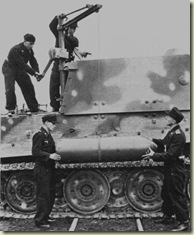 The main armament could be traversed by hand 10 degrees to the left and right and elevated from 0 to a maximum of 85 degrees. The launcher produced a recoil force of 30 to 40 tons. Perhaps the most unique feature of the launcher was the way rocket exhaust gasses were vented. These gasses could not be allowed to enter the fighting compartment, and the breech was not strong enough to resist them until the rocket left the barrel, so they were channeled through ventilation shafts around the barrel with numerous exit holes surrounding the muzzle. The result was a spectacular flash when the weapon was fired. Because of this, the Sturmtiger had to move after each shot because its position was revealed to the enemy. The launcher barrel was later fitted with a steel ring as a counterweight to improve elevation and aiming.
The main armament could be traversed by hand 10 degrees to the left and right and elevated from 0 to a maximum of 85 degrees. The launcher produced a recoil force of 30 to 40 tons. Perhaps the most unique feature of the launcher was the way rocket exhaust gasses were vented. These gasses could not be allowed to enter the fighting compartment, and the breech was not strong enough to resist them until the rocket left the barrel, so they were channeled through ventilation shafts around the barrel with numerous exit holes surrounding the muzzle. The result was a spectacular flash when the weapon was fired. Because of this, the Sturmtiger had to move after each shot because its position was revealed to the enemy. The launcher barrel was later fitted with a steel ring as a counterweight to improve elevation and aiming.
Sturmtiger could demolish any building or other target with a single shot, but it could carry only 14 rocket projectiles inside the superstructure. Twelve projectiles were stored in two stowage racks, one more in the launcher and another on the load-ing tray. Most vehicles carried only 13 rounds, without the one on the loading tray. The vehicle was equipped with a hand-operated lifting crane mounted on the right rear of the superstructure. This was used to load projectiles into the vehicle and needed the entire crew of five to operate. The crane could be dismantled and stored when not in use. A two-piece rectangular loading hatch was located in the superstruc-ture roof with guide rails below it and a winch to assist in moving rounds into and out of the storage racks and onto the loading tray. The rear section of the loading hatch was hinged at the rear and incorporated a 90mm NbK 39 Nahverteidigungswaffe, which was a breech-loading grenade launcher for close-in defense. This weapon had a 360-degree traverse and was intended for use in all late-war tanks, replacing exter-nally-mounted smoke dischargers and grenade launchers. The round hatch in the rear wall of the superstructure provided crew entry and exit.
Marvin Heemeyer and the Killdozer
 After years of enmity with the city council over the construction of a concrete plant near his store, Marvin Heemeyer drove an armored Komatsu D335A bulldozer through downtown Granby, Colorado, pulverizing several buildings before turning a gun on himself. After lobbying unsuccessfully against the construction of the plant, Heemeyer found his muffler shop cut off from the rest of town, his business curtailed.
After years of enmity with the city council over the construction of a concrete plant near his store, Marvin Heemeyer drove an armored Komatsu D335A bulldozer through downtown Granby, Colorado, pulverizing several buildings before turning a gun on himself. After lobbying unsuccessfully against the construction of the plant, Heemeyer found his muffler shop cut off from the rest of town, his business curtailed.
 Heemeyer purchased a bulldozer with the intention of building a road connecting his store to the main road, but city council members rejected his proposal. Over the next two years, he proceeded to fortify the bulldozer, armoring it with concrete sandwiched between half-inch thick steel plates. Thus enclosed, he wired an ingenious network of cameras so he could see outside on a pair of old televisions. Inside, he mounted powerful fans to blow away dust from the air slits and gun portals,
Heemeyer purchased a bulldozer with the intention of building a road connecting his store to the main road, but city council members rejected his proposal. Over the next two years, he proceeded to fortify the bulldozer, armoring it with concrete sandwiched between half-inch thick steel plates. Thus enclosed, he wired an ingenious network of cameras so he could see outside on a pair of old televisions. Inside, he mounted powerful fans to blow away dust from the air slits and gun portals, 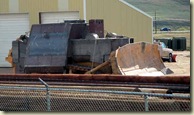 and kept a stock of beverages in a cooler.
and kept a stock of beverages in a cooler.
On the afternoon of 4 June 2004, Heemeyer decided to put his plan into action, and took the finished killdozer on a long, lumbering joyride through the concrete plant, the town hall, and several businesses and homes before becoming stuck in the rubble of a collapsed warehouse. By that time, the killdozer was surrounded, and a swat team was firing bullet after bullet at the hull of the beast, only to see the shots ricochet off pitifully while Heemeyer, armed with a rifle, returned fire. After a ten minute standoff, the bulldozer went silent.
 Type 2 Ka-Mi
Type 2 Ka-Mi
As early as 1928, the Imperial Japanese Army had been developing and testing amphibious tanks. They created several experimental amphibious tanks such as the SR-II, the Type 1 Mi-Sha, and the Type 92 A-I-Go. In 1940, the Navy took over development of amphibious vehicles and two years later came up with the Type 2 Ka-Mi. The Type 2 was designed for the navy's Japanese Special Naval Landing Forces for the invasion of Pacific Islands that were bereft of port facilities.
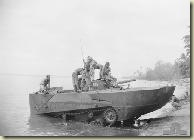 The Type 2 was based on the Type 95 Ha-Go light tank and was a capable armoured fighting vehicle both on land and at sea. It was capable of attaining speeds of 10km/h in the water with a range of 150km by utulizing two propellers at the rear of the hull which were powered by the tank's main engine. Steering was handled by the commander, who controlled the tank's pair of rudders with cables from the turret. The tank was generally water-tight because of the Type 2's welded armor and rubber seals in the hull. Large hollow pontoons made from steel plates were placed on the glacis plate and rear decking was used to float the tank. The front pontoon was divided into 8 compartments to minimize flood and shell-fire damage. These floatation devices could be jettisoned from inside the tank with pincer-clamps. The Type 2 could also be launched from the deck of submarines.
The Type 2 was based on the Type 95 Ha-Go light tank and was a capable armoured fighting vehicle both on land and at sea. It was capable of attaining speeds of 10km/h in the water with a range of 150km by utulizing two propellers at the rear of the hull which were powered by the tank's main engine. Steering was handled by the commander, who controlled the tank's pair of rudders with cables from the turret. The tank was generally water-tight because of the Type 2's welded armor and rubber seals in the hull. Large hollow pontoons made from steel plates were placed on the glacis plate and rear decking was used to float the tank. The front pontoon was divided into 8 compartments to minimize flood and shell-fire damage. These floatation devices could be jettisoned from inside the tank with pincer-clamps. The Type 2 could also be launched from the deck of submarines.
The Type 2's high-velocity Type 1 37mm gun was able to rotate 360° and a Type 97 machine gun was located in the tank's bow and another co-axially in the turret. Occasionally Type 2's were armed with a pair of naval torpedoes on each side of its hull. The Type 2 had a large crew including a crewman to handle the tank's innovative radio and telephone intercom and an onboard mechanic. Late in the war, the Type 2 was used in a more stationary role as fixed defenses and entrenched pillboxes on various Pacific islands.
From 1942 onward, only 184 Type 2 Ka-Mi's were built due to the tank's complex design. Furthermore, it had to be completely hand-built, which further slowed down the production process.
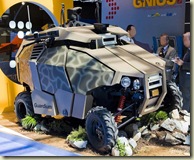 Guardium UGV (Autonomous Unmanned Ground Vehicle)
Guardium UGV (Autonomous Unmanned Ground Vehicle)
Guardium autonomous observation and target intercept system was developed by G-NIUS Autonomous Unmanned Ground Vehicles joint venture company established by Israel Aerospace Industries and Elbit Systems. The Guardium system employs autonomous unmanned ground vehicles (UGV) which can be operated from a command center, carry out routine patrols and quickly respond to evolving emergencies. They can suppress suspicious elements close to the perimeter, and hold them back until manned security forces arrive, or use various forceful means to eliminate the threat, if applicable.
The Guardium UGV uses the TomCar chassis. The vehicle is equipped with an automated tactical positioning system and can operate autonomously on and off road, at speeds up to 80 km/h. The vehicle can carry a payload of up to 300 kg, including light armor shield to protect vital systems. The UGV can carry a wide variety of sensors, including video and thermal cameras, with auto-target acquisition and capture, sensitive microphone, powerful loudspeakers and two way radio. The vehicle can also be equipped with lethal or less than lethal weapons which can be directed and operated from the Main Control Center (MCC). A fleet of Guardium vehicles can be used as sentries, controlled from the MCC, from where they are launched on routine patrols, ambushes or operating in response to events received from an early warning or perimeter defense system. The MCC is also provided with automatic tactical area definition, by terrain, doctrine and intelligence, which assist in preparation of the operational planning and programming for USVs. Each USV can also be manually controlled by remote control.
 Following a successful evaluation in 2005 Guardium was selected by the Israel Defense Forces to operate as part of the border security operations. By May 2008 the IDF received the first batch of Guardium UGVs scheduled to enter fully operational service along the countrie's borders by the year's end. In 2008 Israel's Airport Authority conducted an evaluation of the system as part of possible integration of an autonomous UGV as part of its airport security system.
Following a successful evaluation in 2005 Guardium was selected by the Israel Defense Forces to operate as part of the border security operations. By May 2008 the IDF received the first batch of Guardium UGVs scheduled to enter fully operational service along the countrie's borders by the year's end. In 2008 Israel's Airport Authority conducted an evaluation of the system as part of possible integration of an autonomous UGV as part of its airport security system.

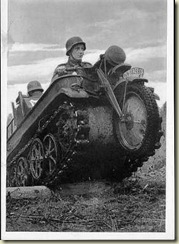

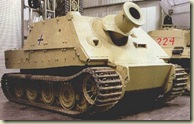
No comments:
Post a Comment